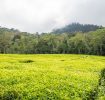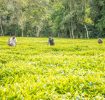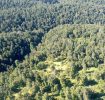Performance highlights
To date the NTZDC has registered some seismic achievements in the conservation ecosystem especially in the main water towers in the country, namely – Mt. Kenya, Aberdares, Mau forest Complex, Mt Elgon, Cherangany Hills, Kakamega Equatorial Forest, Nandi forest and Kaptagat forests – where the tea buffers have been established, allowing the forests in those catchments areas to flourish and to remain intact since there is no encroachment. In addition, natural ecosystems in the protected areas have been restored by planting tea and assorted tree species in some of areas where forests had been cleared due to human activities.
Conservation Initiative Achievements
The corporation has achieved a triple growth in its buffer operations since its inception in 1986., The first establishment covered about 300kms stretch (which is about 3000 hectares) and has now grown to about 930kms stretch of forest protection buffers across the country.

19 GAZZETED FORESTS PROTECTED THROUGH BUFFER MODEL
Mt. Kenya I Aberdares I Mau forest Complex, Mt Elgon I Cherangany Hills I Kakamega Equitorial Forest I Nandi forest I Kaptagat forests

5,235 HA +
Assorted tree species
planted within the
buffer areas

4046 HA +
Covered by tea
plantations in
Buffer Zones

1,500,000+ HA
Seedlings provided from NTZDC Nurseries to various
communities, schools
and CBO'S

29 M +
Kilograms of green
leaf produced
annually.

975,582 KM +
Forests protected by buffer

939 HA
Stretch of Tea &
Tree buffer

1,000,000M +
Trees planted by the local community
through the help of the organization

70%
of company proceeds is
directed towards
forest conservation.
Livelihood Transformation & Support
Evidently NTZDC has supported livelihoods through employment creation. The buffer zones support an average of 12,000 people daily through various buffer activities, and the organization pays over Ksh. 600m directly to communities annually. Correspondingly, through value addition through tea processing and branding, NTZDC plays its role in supporting the Government’s Vision 2030 blueprint that seeks to make East Africa’s largest economy the continent’s manufacturing hub.

12,000+ HOUSEHOLDS
Supported daily through various buffer activities

KSH 600M+
Paid out directly to communities( farmers and others) annually.

14,0000+
Staff including casual, temporary, HQ level, regional offices as well as factories.

100+
Tea buying centres have
been constructed

150 Km +
of road rehabilitated in the rural areas.

30 +
Schools have received infrastructure Support & Rehabilitation
Awareness Raising

100,000+
Students and teachers in various schools in 13 counties have been reached through their worldlife club in corporation with NTZDC

3,000+
Farmers have been trained on sustainable agricultural practices mainly in the tea sector.

100+
Schools have been enlightened on our environmental conservation campaign program through our wildlife club
In terms of sustainability, the Corporation has equally evolved. At the time of inception, NTZDC was wholly funded by the exchequer to execute its operations Subsequently, as the buffer expanded and also the tea matured, the Corporation is now able to undertake operations and maintenance of the tea and tree buffer zones, and the proceeds from green leaf and made tea sales has been ploughed back towards the expansion of the buffer and sustaining the conservation element. Currently the Corporation is self-sustaining in that it is able to meet both its recurrent and development expenditure and pay dividends to the exchequer with surplus generated. Thus, being able to sustain our conservation mandate in terms of maintaining the buffer belts, in terms of expanding and doing consolidation of the existing buffer belts so there is significant growth from being independent of the exchequer to sustainability, and this has therefore provided livelihood to more than the 12,000 employees who are working across the conservation belts in the country.